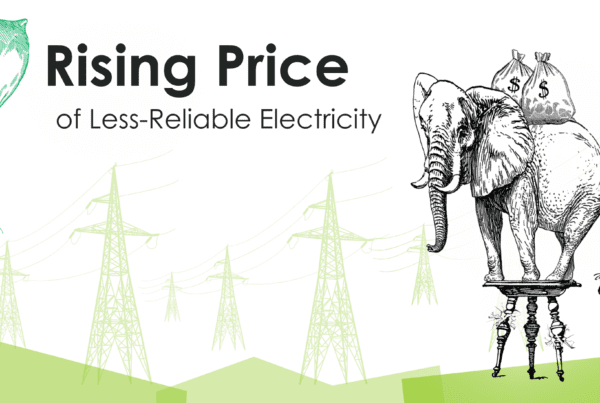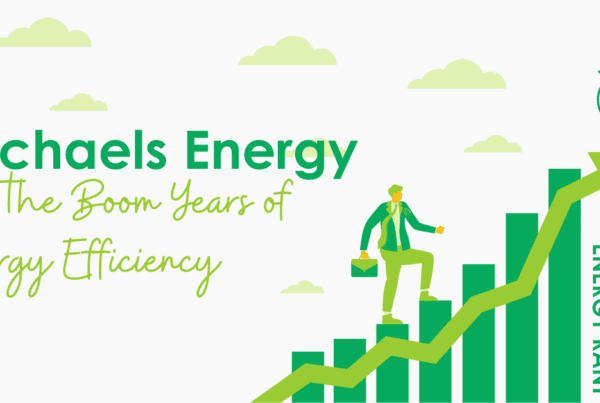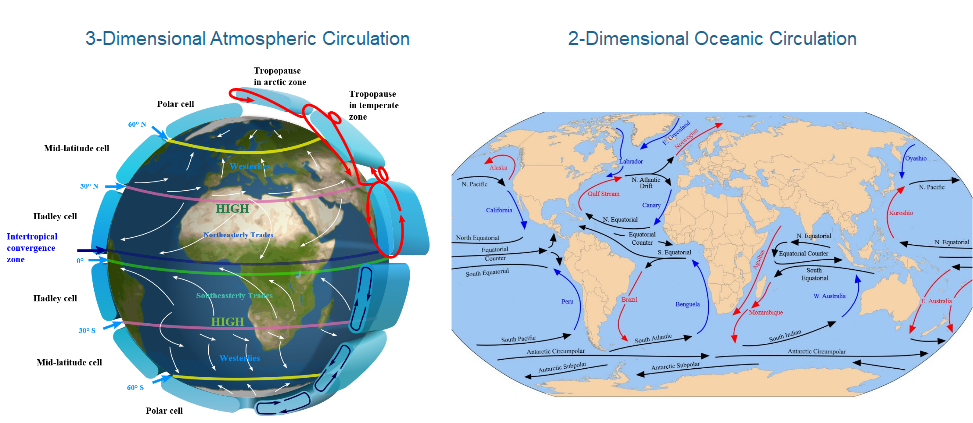
The topic of climate change is fascinating to me because I love to learn why people believe what they believe. I wrote last week that climate change policy is firmly and forever intertwined in political warfare. Does anyone stand alone on an island isolated from their tribe on anything? Maybe five out of one hundred on an issue or two, but for the most part, no. This is where I come in – I love stirring the pot.
A few months back, a friend forwarded a link to Global Warming for the Two Cultures, by Richard LIndzen, Professor of Meteorology, MIT. I finally picked it up last week. Warning, it’s a hard read, but there are a few nuggets to be harvested. It first describes an old British physicist’s disdain for the “highly educated” and their “incredulity at the illiteracy of scientists.” The physicist explains how he would retort by asking up their noses to explain the second law of thermodynamics[1]. The response? Cold scowls.
Turbulent Uncertainty
I feel a bit more qualified[2] than the average schmo to talk about climate change because the planet is a thermodynamic model that reflects, absorbs, emits, and stores solar energy. From there, It is impossible to model because air and ocean churn with turbulence, constantly.
Think: if the earth didn’t orbit the sun, would we have weather? If there is no orbiting, there are no seasons. Changing seasons feed atmospheric turbulence, which gives us weather – storm systems, rain, and snow. Turbulence occurs when heat travels from the tropics to the poles, which heat and cool with seasons. Turbulence is also a function of trade winds and gulf streams, which are driven by Coriolis effects, not thermal drivers. Coriolis effects occur as the earth spins fastest at the equator, and the air and water can’t keep up, setting up the atmospheric and oceanic currents shown.
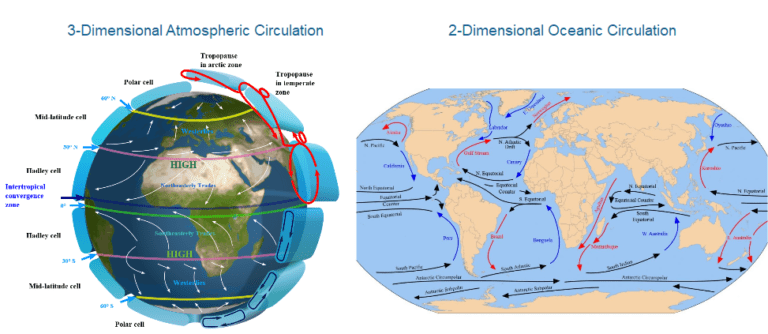
Poor Weather Forecasting
The reason the forecast for Saturday, June 1, 2019, on Wednesday, May 29th, called for an 80% chance of rain, and then on Friday, May 31st it changed to a 25% chance, is turbulence. Turbulence is chaos, and despite decades of weather model development, they still cannot accurately predict the weather more than a day ahead.
Enormous, Slow-Churning Heat Sinks
Yes, but Jeff, all the ocean’s heat is stored in the top few meters. Not so much. It is more like a trout stream with slow-changing deep pools and faster changing shallow shelves – except the timescale can be years to hundreds of years. It is not a stagnant lake.
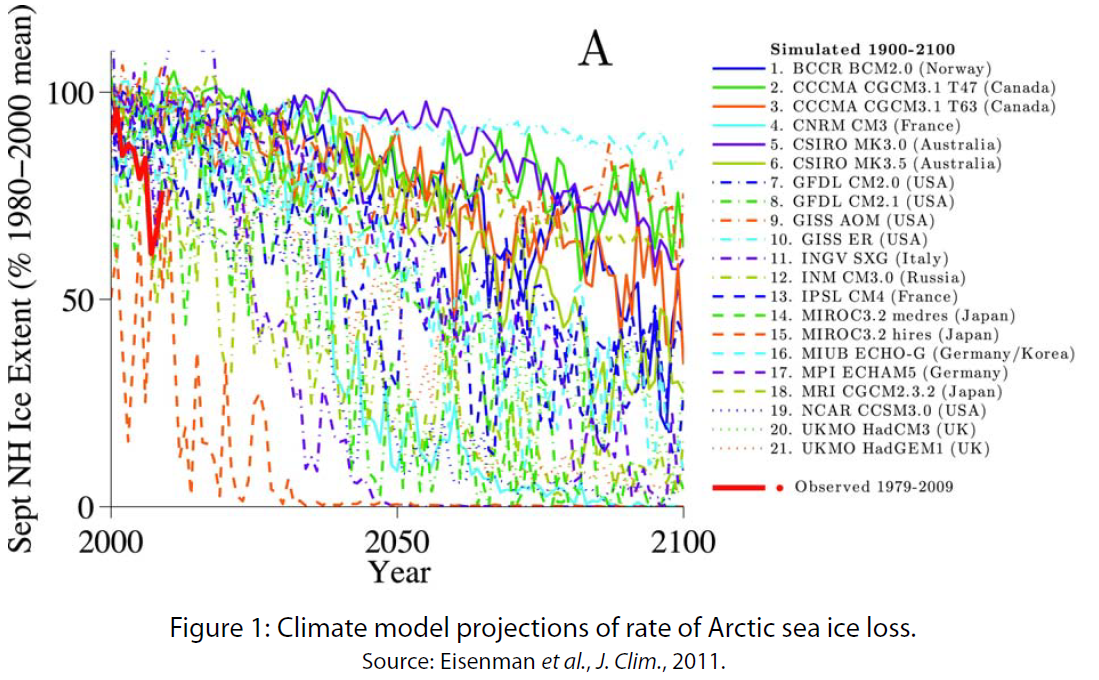
The total mass of the atmosphere is 5,140,000,000,000,000,000 kg. The mass of the oceans is 1,400,000,000,000,000,000,000 kg. Those are big numbers, but the latter is about 272 times larger than the former, with 1,100 times the capacity for storing heat. Model that! Many have tried per the following Arctic sea ice projections. At least there appears to be little calibration between the models!
CO2 Impact on Temperature
Here is something new for you, or at least for me: without the atmosphere and its “greenhouse” effect, the average surface temperature would be 255 Kelvin, or minus 18 Celsius, or -1F = cold enough to keep ice cream in decent shape for a while. With the atmosphere and the dominant heat-trapping gas, water vapor, the average temperature is 33C or 59F. On that note, CO2 will have a much greater share of the atmospheric blanket where water vapor levels are low – at the poles, where the ice is.
Lindzen writes that a doubling of CO2 levels would be the equivalent of adding about 2% to the incoming energy from the sun. He writes this is on par with effects of cloud cover and height, snow cover, and oceanic effects. In my business lingo, this is not unreasonable. Finally, since we began burning fossil fuels, the CO2 levels have increased, 40%, tops. Therefore, the effect of CO2 increases equals about 0.8% change in incoming radiation.
What do you believe, Jeff? I agree with the bride in last week’s cartoon: the climate changes. Like the turbulence course, part of getting smart is understanding one’s limits, what is not known or in this case, what no one knows.
What is an engineer’s typical answer to any question?
Wait.
Wait.
“It depends.”
As for asking what impact do you think burning fossil fuels has on our climate, the answer can only start with “I believe” or “I don’t know.” If it is something else, they have not practiced engineering outside of a controlled laboratory setting enough to see that their predicted outcomes are reliable.
Tribes
Lindzen describes why people believe what they believe. He splits folks into two groups: non-technical “educated elites” (e.g., most policymakers and 99.8% of politicians), and scientists.
For the elites he writes, they are:
- Conditioned to rationalize anything to please highly political professors.
- Less vulnerable to economic impacts of policy; e.g., taking the subway, walking, or bicycling in a city is easy, and energy’s slice of the cost-of-living pie, puny.
- Fearful, especially on the right, of being labeled a knuckle dragger.
He writes scientists are biased by:
- Huge sums of money in it.
- Fear of standing alone.
There is no money in saying I don’t know – only wisdom and honor. Beliefs are fine, but the planet will not be uninhabitable in 12 years because of CO2. Put a copy of this in your safety deposit box and call me in 11 years from your deathbed if I’m wrong. I won’t mind being wrong because I did all I could do.
[1] Answers: water flows downhill; your refrigerator won’t work unless you plug it in; it’s easier to get toothpaste out of the tube than it is to put it back inside; the heat from brake rotors cannot be turned back into gasoline; etc.
[2] M.S. Mechanical Engineering, Nuclear Engineering, PhD-Level course in turbulence where all we learned is what cannot be solved, and how to guess instead.
